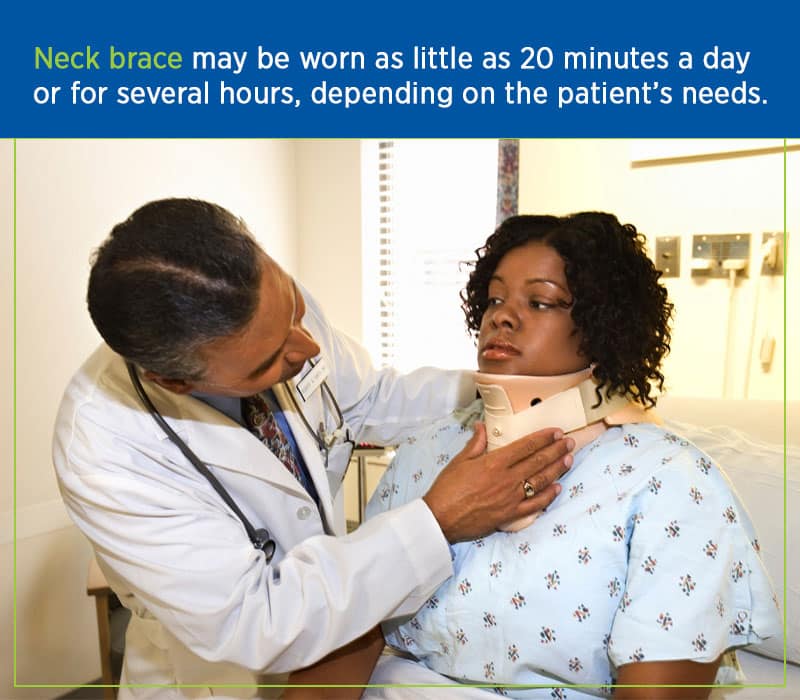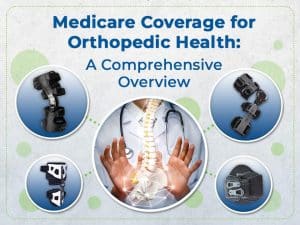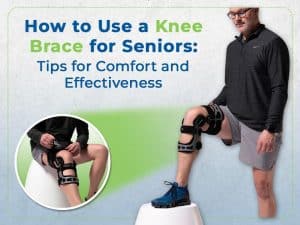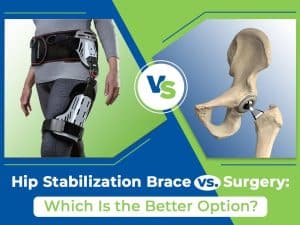Neck pain can be caused by various factors, from poor posture to age-related wear and tear. While neck pain is often temporary, it can sometimes be long-lasting or even chronic if not treated properly. A neck brace is an effective device for addressing neck pain and reducing its intensity over time.
In the event of neck pain, it’s essential to consult with a medical professional before attempting any type of treatment. Depending on its severity and causes, neck pain may require medication or physical therapy to address its underlying source. Neck braces help reduce strain on the neck by adequately supporting the head and neck, which helps promote optimal healing.
When considering whether a neck brace is the best solution, it’s important to consider the neck pain’s severity and whether the neck brace will be a long-term solution. If neck pain is mild, simply avoiding neck strain can often help relieve it. However, if neck pain persists or worsens over time, talking with a doctor about a neck brace may be beneficial.
What Is Neck Pain?
Your neck is made up of vertebrae that extend from the skull to the upper torso. Cervical discs absorb the shock between bones. Bones, ligaments, and neck muscles support the head and allow movement. An abnormality, inflammation, or injury can cause neck pain and stiffness. Many people experience neck pain and stiffness from time to time. Poor posture, overuse, and poor sleeping posture are often the reasons. Also, falls, contact sports, or whiplash can cause neck pain.

What Is Neck Pain?
In most cases, neck pain is not severe and resolves within a few days. However, in some cases, neck pain may indicate a serious injury or illness that requires medical attention. If your neck pain lasts longer than a week, is severe, or is accompanied by other symptoms, see your doctor immediately.
What Causes Neck Pain?

What Causes Neck Pain?
Neck pain and stiffness can occur for many reasons.
Muscle Tension And Strain
- Poor posture
- Doing desk work for a long time without changing posture
- Sleep with a bad neck position
- Jerking the neck during exercise
Heart Attack
Neck pain can also be a symptom of a heart attack. It’s often accompanied by other symptoms of a heart attack, such as:
- Difficulty breathing
- Sweat
- Nausea
- Vomit
- Arm and jaw pain
If you have neck pain and other symptoms of a heart attack, call 911 or go to the emergency room immediately.
Meningitis
Meningitis is inflammation of the thin tissue surrounding the brain and spinal cord. People with meningitis may experience the following:
- Torticollis
- Headache
- Nausea
- Vomit
- Sensitivity to light
- Fever
Neck Brace as Part of Non-Surgical Treatment
Several non-surgical or conservative treatment options can help treat and relieve neck pain. Thankfully, spinal surgery is rarely needed. A neck brace is part of a conservative treatment plan that includes medication (over-the-counter or prescription), physical therapy, massage, and/or acupuncture. A doctor’s recommended treatment plan is based on the results of physical and neurological examinations, x-rays, and other imaging tests and the severity of symptoms, all of which confirm the diagnosis. Treatment goals often include neck stabilization, pain management, healing progression, and early mobilization.
Read More: Knee Bracing: 5 Benefits Of Using Knee Orthosis For Osteoarthritis
Neck Brace: When To Use One
There are three reasons why you should wear a neck brace.
- The most common reason is pain relief. A neck brace helps the neck support the head’s weight while giving the neck’s soft tissues a chance to heal.
- After cervical spine surgery, you may need a neck brace to align your neck bones during healing.
- After a serious accident, a neck brace may be worn as a precaution until the possibility of neck injury is evaluated.
Neck Brace: Wear and Care

Neck Brace: Wear and Care
Neck braces range from simple one-piece, soft wrap-around collars to rigid braces with pads supported by rigid plastics. Whether a doctor recommends a soft cervical collar or a semi-rigid plastic brace depends on the severity of your neck problems and how long you wear the brace.
Patients typically wear the brace continuously and remove it as often as necessary for daily cleaning. If your doctor recommends a brace, you will be given specific instructions on how to wear and care for it, but in general, you should follow these guidelines:
- The neck brace should fit snugly so that you cannot move your head, and your chin should not dig into the collar or stick out.
- The lower edge of the neck brace should fit comfortably against your body, with only the padded area touching your skin.
- Your hair should be outside if you have a beard or long hair.
- The skin should be kept clean and dry underneath the brace. Do not use powders or lotions, as they can damage the pads.
- Always make sure your skin is free from irritation when removing and cleaning your neck brace.
- Pads that come in contact with the skin should be cleaned daily with a mild detergent. If your neck brace has plastic support, clean it with a damp towel and mild soap once a week. Never use harsh detergents or abrasives.
A neck brace is a temporary device that helps heal the neck and relieve neck pain. It’s important to wear the neck brace correctly for maximum benefit. A good neck brace will restrict movement but won’t cause discomfort. So let your doctor know if your neck brace makes you uncomfortable.
Neck Brace Advice
If your doctor prescribes a brace, it’s important to follow your doctor’s instructions on how to wear the brace. Wearing braces as prescribed can reduce pain while reducing the risk of side effects from overuse. Also, talk to your doctor about how to care for your braces.
The Bottom Line
In general, neck braces should only be used as part of an overall treatment plan that includes lifestyle changes such as rest and stretching exercises for the neck and shoulders. Furthermore, neck braces should be worn according to medical advice, not just for comfort, since wearing them too much could lead to weakened neck muscles.
It’s important to remember that neck pain is not something to ignore. Understanding its causes and when it’s best to use a neck brace can help ensure proper neck pain relief. Consult a doctor if neck pain persists or worsens over time, as it may signify an underlying medical condition that should be addressed. You’ll feel better soon with an understanding of neck pain’s causes and when it is best to use a neck brace!
Artik Medical Supply provides high-quality, long-lasting products. We focus on our client’s needs to find the right solution that aligns with their primary care doctors’ guidance for their rehabilitation process. Do you need pain relief, or are you recovering from an injury or surgery? Connect with us today to check eligibility and see how we can help.








